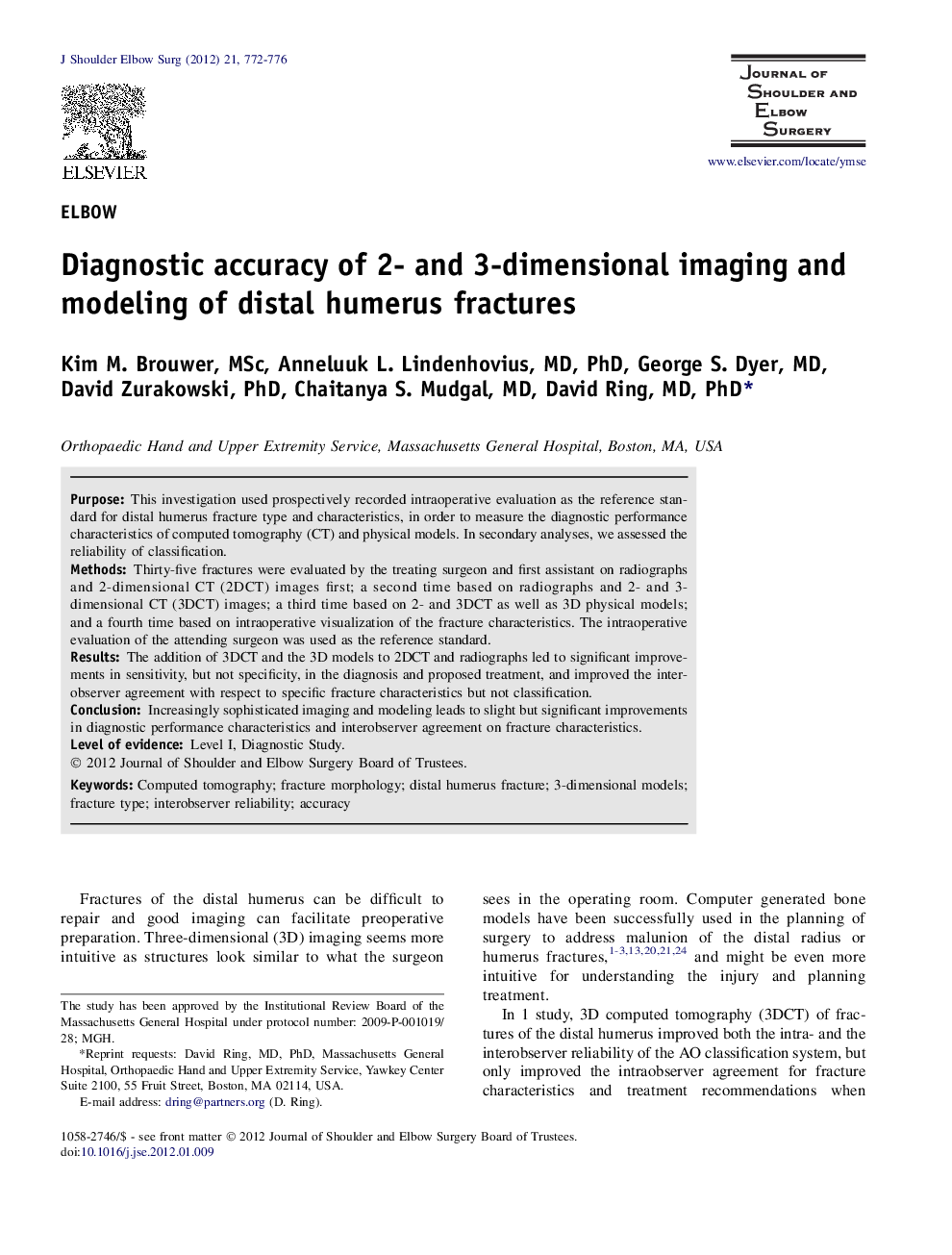| Article ID | Journal | Published Year | Pages | File Type |
|---|---|---|---|---|
| 4074381 | Journal of Shoulder and Elbow Surgery | 2012 | 5 Pages |
PurposeThis investigation used prospectively recorded intraoperative evaluation as the reference standard for distal humerus fracture type and characteristics, in order to measure the diagnostic performance characteristics of computed tomography (CT) and physical models. In secondary analyses, we assessed the reliability of classification.MethodsThirty-five fractures were evaluated by the treating surgeon and first assistant on radiographs and 2-dimensional CT (2DCT) images first; a second time based on radiographs and 2- and 3-dimensional CT (3DCT) images; a third time based on 2- and 3DCT as well as 3D physical models; and a fourth time based on intraoperative visualization of the fracture characteristics. The intraoperative evaluation of the attending surgeon was used as the reference standard.ResultsThe addition of 3DCT and the 3D models to 2DCT and radiographs led to significant improvements in sensitivity, but not specificity, in the diagnosis and proposed treatment, and improved the interobserver agreement with respect to specific fracture characteristics but not classification.ConclusionIncreasingly sophisticated imaging and modeling leads to slight but significant improvements in diagnostic performance characteristics and interobserver agreement on fracture characteristics.
